Exploring the Titanic of the Ancient World
Scientists search the wine-dark sea for the remains of a ship that sank 2,000 years ago—carrying what is believed to be the world’s first computer
/https://tf-cmsv2-smithsonianmag-media.s3.amazonaws.com/filer/f0/d0/f0d02b73-b703-4690-b79b-f8dd8031afa6/feb15_j06_antikythera.jpg)
More than 4,500 miles from home, Brendan Foley climbs out of a battered Fiat van and heads for the edge of the cliff up ahead. The sharp rocks are dotted with goat droppings and gorse, and he struggles to keep his footing as the wind screams past, so violent that he wonders for a moment if he’ll be blown right off the rocks. From as close to the edge as he dares, he looks down at the waves. The gales have turned the sea so white it looks like boiling milk.
The barren island of Antikythera is perhaps Greece’s most remote scrap of land, just over six miles long and two miles wide, a dot on the map between the east and west Mediterranean. It has just 30 or so permanent inhabitants, who live in white houses clustered around the island’s only harbor. When Foley, an archaeologist, arrived here with his team two weeks ago, they made an offering to Poseidon, pouring wine and olive oil into the ocean in the hopes of being granted calm waters. But instead, the sea has conjured brutal storms. To see just how bad the conditions are today, Foley has driven across the headland to a north-facing curve in the cliffs called Pinakakia.
Beneath the cliff, under 180 feet of churning water, are the remains of a ship that smashed against Pinakakia’s rocks 2,000 years ago. When this wreck was discovered in 1900, it yielded a priceless cargo—Greek statues, glassware, jewelry and a sophisticated device for modeling the cosmos so revolutionary that the science fiction writer and futurist Arthur C. Clarke later argued it could have sparked the Industrial Revolution more than a millennium ago. If the Greeks had been able to build on the technology, Clarke said, “By this time we would not merely be pottering around on the moon. We would have reached the nearer stars.” As the first wreck ever investigated, the Antikythera ship, as it’s now known, caught the world’s attention and gave birth to the field of marine archaeology.
Foley, 46, is easygoing and personable, as comfortable mingling with politicians and billionaires as with his colleagues at the Woods Hole Oceanographic Institution back in Massachusetts. He’ll need his good nature on this trip, as well as the streak of determination it often hides. He is convinced that many of the ship’s treasures are still in the sand, and he has returned to the site with the best technology that the 21st century has to offer to undertake one of the most ambitious underwater archaeology projects in history.
He’s spent the past decade building a partnership with Greek archaeologists, usually fiercely protective of their heritage, to become one of the only U.S. scientists allowed to work in the country’s waters. With Theotokis Theodoulou and Dimitris Kourkoumelis of Greece’s Ephorate of Underwater Antiquities, he has gathered the world’s top technical divers (supported by a team from the Greek Navy), gained the use of a state-of-the-art robotic submarine from Australia, and collected millions of dollars in research funds from private sponsors such as Greek billionaires and a Swiss watchmaker.
Donors provided a luxury yacht and a helicopter, and have even installed a 4G cellphone tower on the island so that the team has uninterrupted Internet. Most impressive of all, Foley has on loan the futuristic Exosuit—the world’s most advanced diving suit, essentially a wearable submarine worth $750,000—along with a Greek Navy ship to launch it from. The Exosuit is brand-new, and Antikythera is to be its first foray into the open sea.
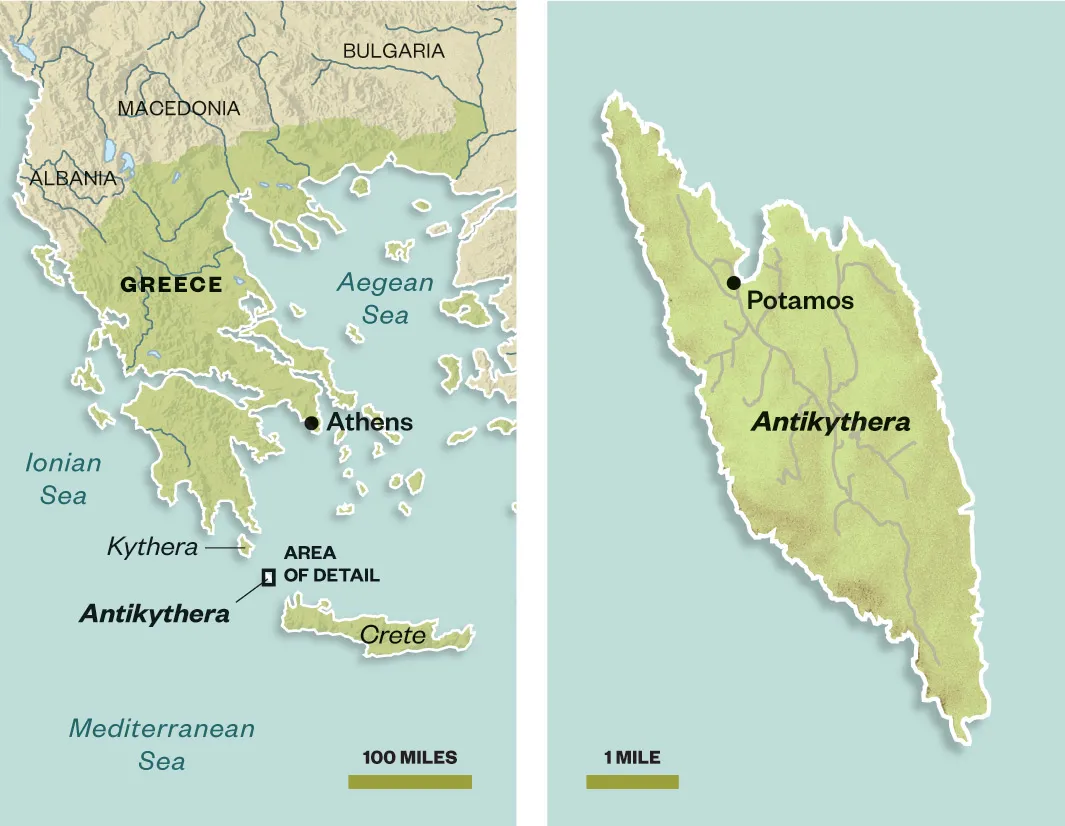
Foley, a graduate of the University of Southampton in England and later MIT, learned from the best: deep-sea explorer Bob Ballard, who discovered the wreck of the Titanic in 1985. From 1997 to 2003, Ballard was a mentor for Foley, starting with an expedition to Skerki Bank, an area of open sea on an ancient shipping route between Sicily and North Africa. “It opened my eyes to archaeology as big science,” Foley says. That multimillion-dollar project, which uncovered four shipwrecks in 1997 alone, had a nuclear-powered research submarine, the remotely operated vehicle Jason and an accompanying TV crew.
Now it’s Foley’s chance to direct a comparable project of his own. It made headlines before the dives even started, but optimism is turning quickly to desperation. It is Monday, September 29, halfway through the four-week trip, and the team has dived on the wreck just twice since arriving—once to relocate the site and once with a metal detector, which yielded no significant hits. With the bad weather expected to continue, the helicopter is out of action. The yacht and navy ship (with the Exosuit on board) have fled to the Peloponnese. And Foley’s divers are high on the hillside above the harbor, huddling in a cockroach-infested set of rooms that pass for Antikythera’s only hotel. They’ve been sitting here for days, behind a truck that’s parked in front of the porch in a vain attempt to block the wind.
Foley, usually relentlessly upbeat, is unable to find any positive spin. “I’m at a loss,” he told me helplessly. “We may not get in the water again.”
In a few days, he has a big event planned on Antikythera’s neighbor, Kythera, the larger of the two islands, with hundreds of journalists, sponsors and politicians being flown from Athens on a luxury jet. (Champagne and canapés will be served even before the plane leaves the runway.) Foley has been looking forward to a triumphant announcement of spectacular finds—the biggest moment of his career so far—and the chance to win money for years of future work.
Now, he doesn’t know what he is going to say.
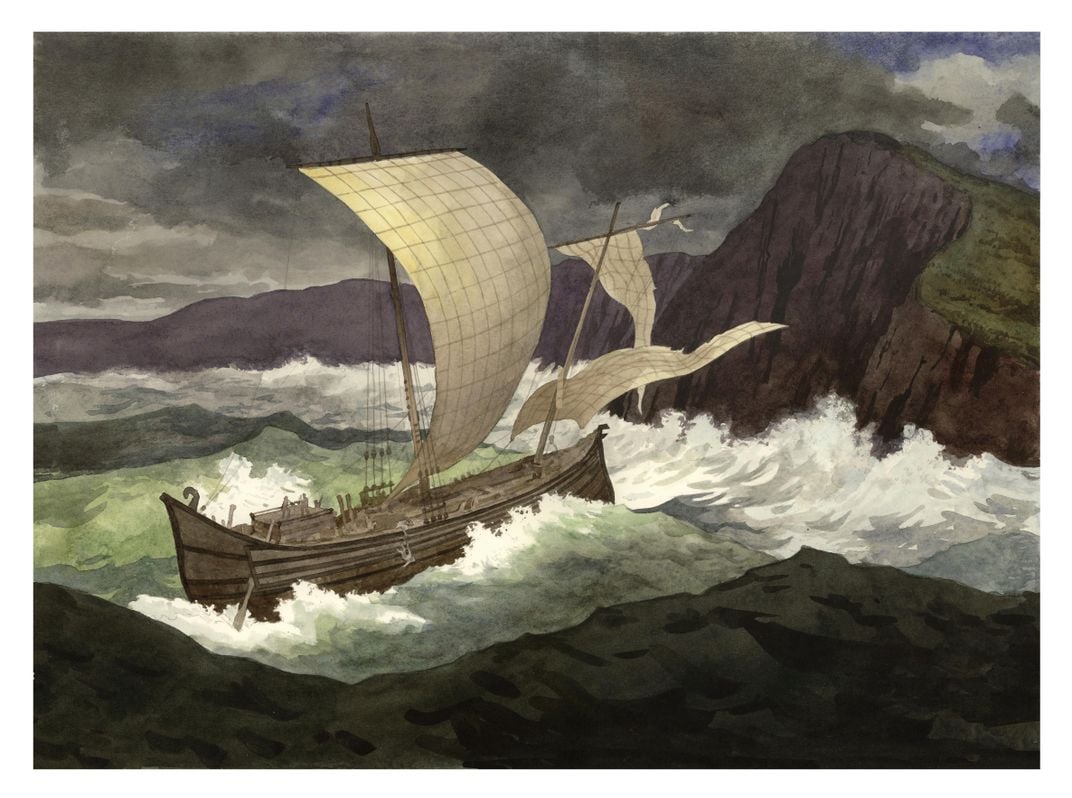
A pile of corpses. Naked. Rotting on the seabed. Elias Stadiatis was scared and breathless as he told his colleagues of the horror he had seen beneath the waves. It was spring 1900, and the small group of sponge divers had been blown off course by one of the region’s notorious storms. They sheltered in Antikythera’s harbor and, when the sea had calmed, looped around the headland.
The divers, led by sponge boat captain Dimitrios Kontos, were from the island of Symi in the eastern Aegean. Along with many thousands of other young men, they sailed to North Africa every spring and returned in the autumn, their tiny boats laden with sponges. The trade was booming thanks to the introduction of canvas diving suits with bronze helmets, which allowed them to dive deeper and longer than ever before.
Stadiatis was the first to dive that day, but he surfaced almost immediately, claiming he had seen dead people and horses on the seabed. Kontos, looking for himself, discovered instead a pile of statues from an ancient ship. The divers continued to their fishing grounds, but when they returned that autumn, Kontos reported the find to officials in Athens, presenting a life-size bronze arm as proof.
The Greek government, reeling from the humiliating loss in the Greco-Turkish War of 1897, hired the men to dive for more, hoping the mission would boost national pride. Over the next ten months, Kontos and his team, guided by archaeologists, salvaged all they could from the wreck. The depth made for dangerous work. The divers breathed air fed through a pipe from the boat above, and the bends was a serious risk, as was the carbon dioxide that, instead of being expelled into the water, became trapped in their helmets. The divers spent only three to five minutes on the seabed per dive, but by the time the work was done, two suffered paralysis and one was dead.
Kontos’ men brought up a breathtaking haul. One glass bowl was a delicate bluish green with carved olive branches. Others were made of hundreds of twisted coils. A wood and bronze couch featured a headrest decorated with lions and the bust of a woman wearing her hair in a bun. The huge marble statues had rough, pitted surfaces where sea creatures such as date mussels and marine bacteria had eaten away the stone. The bronzes were in better condition, including a six-foot-tall athlete now known as the Antikythera youth—one of the finest statues that survives from classical Greece.
Overall, the ship yielded one of the most impressive collections of treasures ever recovered from antiquity. Hundreds of ancient cargo ships have been excavated since, but only a handful of luxury items rival those from Antikythera: a load of marble columns and sculptures from a wreck near Mahdia, Tunisia; a bronze statue of Zeus in the act of throwing a thunderbolt, found off Greece’s Cape Artemision; ebony, ivory and ostrich eggs from a late Bronze Age ship that sank off Turkey’s Cape Gelidonya.
Absolutely nothing to this day rivals the small bronze device dubbed the Antikythera mechanism. The complexity of the machine’s gearwheels and dials led to claims that it was a modern instrument later dropped on the wreck site by chance, and even that it was made by aliens. Scholars studying its internal workings now understand that the device, dating to the first century B.C., modeled the undulating motions of the sun, moon and planets through the sky. Nothing close to its sophistication is known until the appearance of modern clocks in Medieval Europe, and it has revolutionized our understanding of what ancient craftsmen were capable of. Who exactly made this breathtaking machine? Why? And how did it end up on this doomed ship? These are open questions.
The items retrieved by the sponge divers were taken to the National Archaeological Museum in Athens, where many are on display today. Studies of the ship and its contents have since concluded that this was a Roman vessel that sailed between 70 and 60 B.C., carrying Greek treasures—some of which were centuries old when the ship sank—from the eastern Mediterranean westward. At this time, the Romans were gradually taking over the entire region, and they shipped boatloads of Greek artwork, including paintings, mosaics and sculptures, back home to decorate their luxury villas. For archaeologists today, the wreck is a time capsule, a single moment of history preserved. Like the tomb of an ancient pharaoh, it offers a unique window into a long-lost world.
The legendary marine explorer Jacques Cousteau recognized its value. With the scuba technology he invented, he led an expedition to Antikythera in 1976. Over five months, he dredged part of the wreck site and discovered hundreds of small items, including coins, glass pawns from a board game, jewelry and snail shells, probably the remains of food eaten by the crew. There were bones from at least four individuals, including a young woman, who may have been on the ship as a passenger (sparking theories that the Antikythera mechanism belonged to a princess traveling with her dowry). The area Cousteau investigated may have corresponded to the ship’s galley and cabins. What Cousteau didn’t find, however, was the hold.
So nearly 40 years later, Foley and his team are back, the first to dive the site since Cousteau, and the first ever to excavate it in a detailed, scientific way. It’s likely that many treasures remain. Half of the Antikythera mechanism is missing, for example, while many pieces of bronze statues, including arms, feet and weapons, were recovered without their torsos.
“When I go to the National Archaeological Museum, I always go straight to the Cape Artemision Zeus,” Foley says of the bronze statue found at a different wreck. We’re talking over breakfast, and he holds up his arms to emulate the statue’s athletic pose. “If we can make finds like that and they are shown in the museum, generations to come will be inspired.”
***
Foley is packing for Kythera. It’s Wednesday, October 1, and he plans to fly there today, to ensure he makes this weekend’s event before the storms return and travel is impossible. He is resigned to giving a lackluster presentation. He can show off a photomosaic map of the wreck site, created during the project’s first week using Sirius, a robotic submarine operated by researchers from the University of Sydney. The resolution is an impressive four millimeters per pixel, and the photos were taken using a pair of stereoscopic cameras to give the appearance of depth. The map is a solid scientific achievement, and for Foley, a crucial prerequisite to excavating any part of the wreck. But it may not be enough to convince his private sponsors to keep pumping in cash.
Foley needs a spectacular find. So far his team has recovered only an oversized bronze washer, probably from the leg of a bed or couch, and a flashbulb dropped by one of Cousteau’s divers in 1976.
Alexandros Sotiriou and Phil Short, the team’s chief divers, eye the waves. Sotiriou, from Athens, practically grew up in his father’s diving center. He has led expeditions to wrecks such as the Titanic’s sister ship, the Britannic. Short, a straight-talking Brit and one of the world’s most renowned extreme divers, spent 45 days underground in 2013 exploring a huge flooded cave complex in Mexico. Caving offers one of the last chances on the planet, he says, to go “where no human being has ever been, where no light has ever shone.”
Both understand the pressure on Foley. With hours to go before the trip to Kythera, the pair decides the winds have calmed just enough for a last-minute dive. Leaving Foley pacing on the dock, they jump aboard a little dive boat, accompanied by two U.S. photographers, and disappear around the headland.
The wreck is on a narrow, sloping shelf that runs north to south, parallel to the island, before dropping off into much deeper water. At first, as Sotiriou and Short descend, only rough boulders dotted with anemones and sponges are visible. As their eyes adjust, they pick out shards of broken pottery. Cousteau’s gear allowed his divers, breathing compressed air, to spend just ten minutes here each dive, but the 2014 team is using a mix of gases in which much of the nitrogen is replaced with helium, as well as a computerized “rebreather” system that scrubs carbon dioxide from the air they exhale, tops up the oxygen and recirculates it. The technology allows a safe hour on the bottom, though it takes more time to safely resurface.
Short heads off to recover a large lead anchor stock that the team located on a reconnaissance dive last year. Sotiriou, metal detector in hand, starts near the galley previously dredged by Cousteau and moves south, presumably away from the bow, to the very edge of the wreck site. It’s a risky strategy, but almost immediately he finds a nearly intact wine jug, its graceful terra-cotta curves buried upside down in the sand. Close by is a chunky bronze ring—part of the boat itself, used for rigging or mooring—and a piece of lead sheeting from the ship’s hull. Isotope analysis of a scrap like this could reveal more clues to the ship’s origin.
As a young boy, Sotiriou was captivated by a library book that told the story of the sponge divers from Symi. Now he imagines himself walking along the 2,000-year-old deck, visualizing the ship’s galley, its towering mast, its swan-necked stern. Where, he wonders, is the cargo hold? A few feet farther south comes his answer, a high-pitched whine from the detector signaling the strongest hit yet. Sotiriou fans the water, raising a cloud of sand, and sees the end of what looks like a sturdy bronze rod. He keeps fanning, working his way along the shaft, and is stunned when, after about six feet, it ends in a glorious point. He has found an ancient spear.
He grunts to the others through his mouthpiece and lifts the weapon for a better look, planting its blunt end in the sand like a Roman guard. That’s it, he thinks. We did what we came here to do. They spend two hours decompressing, making a series of stops at predetermined depths on the way to the surface. With each stop longer than the last, they pass the time by posing for photos with their newly acquired prize. Once up, they whisk the spear back to Foley, for whom just one word is enough: “Exquisite.” Less than two hours later, they are all on the helicopter to Kythera, the spear wrapped in burlap and squeezed between the seats.
***
It is Saturday, October 4, and there’s a buzz of excitement as tourists, schoolchildren and camera crews gather around the picture-perfect harbor of Kapsali on Kythera’s southern tip. All attention is focused on the luxury yacht Glaros, its gleaming white lines a striking demonstration that there is at least some money left in Greece.
This sleek 130-foot vessel has been donated for the duration of Foley’s mission by the Aikaterini Laskaridis Foundation, run by a Greek shipping magnate named Panos Laskaridis, a white-haired 70-year-old who wears a Daffy Duck T-shirt and spends the evenings spearfishing, returning late at night with bucketfuls of silver catch that spill across the deck. (“Brendan told me that there is very good fishing at Antikythera,” he says.) Glaros served as mission headquarters at the island as well as a launch platform for the Sirius sub, until storms forced it to the mainland. This morning the yacht has re-emerged in Kythera to host a private showing of the team’s results in its chandeliered dining room with a select group of Antikythera VIPs: politicians, sponsors and scientists.
“Poseidon has not been nice to us,” begins Foley, dressed in a linen jacket and trousers. “He gives his secrets grudgingly.”
What follows is more movie trailer than academic presentation. Foley plays a slickly edited video of the work, featuring underwater shots, as well as topside footage by Michael Tsimperopoulos, a cameraman more used to shooting Hollywood blockbusters. Sponsor names appear in every scene; boats and gas tanks feature prominent bumper stickers, while the divers contort their arms to show off $30,000 Hublot watches. Unusual for such a high-profile project, no TV company is following the work. Foley says he turned down a hefty sum from National Geographic because he didn’t want to sacrifice control over how and when his results were presented. But he has dedicated tens of thousands of dollars to producing dramatic footage that grabs people’s attention.
Foley shows off his photomosaic map, noting that placing each recovered object on the map will aid in understanding the wreck’s overall structure. “We can bring the shipwreck up into the air where everyone can look at it.”
Then he runs through images of the artifacts found so far, ending on his pièce de résistance, the spear, perhaps the first ever found from an ancient bronze statue. It must have belonged to a statue, Foley explains, because a solid bronze weapon would have been too heavy for a person (real spears had wooden shafts). It might come from a statue of the goddess Athena, he speculates, or a warrior. The surviving point would have been planted into the ground to brace against charging cavalry or to finish off wounded opponents. Striking to behold on its own, the spear proves there are treasures still to be found, and pinpoints the location of the cargo hold, where those treasures are likely to be.
The group applauds warmly; Foley is hopeful he has done enough to come back. But there’s still a million-dollar shadow over the day. Above him on Glaros’ top deck, the Exosuit—brought on for press photographs—glints in the sun. Today’s event was meant to celebrate the suit’s first successful mission. But it hasn’t even dipped a toe in the sea.
***
Thetis is circling. It’s a clunking gray ship built in the 1960s, and on its front deck, in a large steel cradle, the Exosuit stands at attention like a visitor from outer space.
On Sunday, the day after the sponsor presentation, Thetis and the Exosuit finally reached Antikythera. But the ship anchored too far from the wreck site (it is not equipped with GPS, so the crew relies on less accurate paper charts), and there wasn’t time to move before night fell. On Monday, the wind was too strong to risk deploying the suit. Now it’s Tuesday, October 7, the last chance of the mission. After today, the storms are forecast to return and the team will head home.
On the seventh attempt, Thetis finally gets its hooks into the seabed. But it’s still too far away for the Exosuit to reach the wreck. “If seven hasn’t done it, eight isn’t going to,” advises Theodoulou. With so little time left, Foley gives up on doing any archaeology today; Thetis will stay where it is. The aim now is simply to get the Exosuit into the water.
With a red-and-silver shell, domed helmet and pincers for hands, the suit looks straight out of a movie, but it’s for real, the first in a new generation of atmospheric diving suits. The air inside is kept at atmospheric pressure, so there’s no problem with the bends. The pilot can descend to 1,200 feet for hours at a time, and move around thanks to foot-controlled thrusters and 18 rotating joints. Power is fed through an umbilical connected to the boat above.
The Exosuit is more powerful and more maneuverable than any previous model, with more dexterous tools and better visibility for the pilot. It was designed by an entrepreneur named Phil Nuytten, of Nuytco in Vancouver, and is operated by an engineering company in Massachusetts, J. F. White, which hopes it can revolutionize underwater endeavors from archaeology to construction, such as the installation of pipelines.
The suit should have had its first outing in open sea last summer, in a Yale project to collect and image bioluminescent animals. But the camera equipment wasn’t ready in time, so the perilous cliffs of Antikythera became the Exosuit’s first working job.
With Thetis safely anchored, Woods Hole diver Ed O’Brien squeezes into the bottom half of the suit and folds his arms across his chest as the top clamps shut over his head. The quarter-ton suit sways slightly as he is winched high above the deck. This is the most dangerous part of the dive, O’Brien tells me later. If the suit fell at this point, he says, his pelvis could’ve snapped.
But the aluminum alloy ensemble swings over the side without mishap and at 10:45 a.m. slides into the water. O’Brien sinks to 150 feet—“but it could be 800 feet,” he says, “it feels the same”—and stays there for an hour, checking the suit’s thrusters and trying out his pincer hands. The best photographs of the mission come from these moments: breathtaking shots of man conquering the blue abyss.
The Exosuit was never meant to rule the operation “like Superman coming in,” says O’Brien. We’re sitting in Thetis’ cramped officers’ room after his dive. Everyone knew going in that any archaeological discoveries would most likely be made by the divers with their rebreathers. Instead, he says, diving in the suit is about laying groundwork for the future. “We’ve proven our point that we can use this for archaeology,” he says. “We’ve dived very close to a very tough area to get into.”
It’s a glimpse of how marine archaeology might look in the future. But while all eyes were on the Exosuit, the divers have made one more discovery—and it changes everything.
***
Foley has given the go-ahead for one last dive. The instructions: Tidy up the site so it can’t be easily found. Remove the mooring line and the dyed yellow pebbles used to mark metal detector hits. There’s a fear that bounty hunters might scavenge the wreck before the team can return. The site’s depth has so far kept it safe, but with rebreather technology becoming more widely available, it is now within reach of looters.
Once that’s done, Short and Sotiriou swim to a second wreck site, located a few hundred feet to the south. First discovered by Cousteau, this is believed to be from a smaller ship, with a cargo of clay amphoras. It dates to the same time period as the main Antikythera wreck, so perhaps the two ships were traveling together, felled by the same storm. Foley wants some decent pictures of the site.
When the divers return, they’re buzzing. “Today’s dive was awesome,” says photographer Brett Seymour. “Our best so far.” After dinner back at the hotel, he projects the photos from his laptop onto the white porch wall. The sun sets over the harbor, and there’s a gorgeous full moon.
As the divers swim from the scraped-clean landscape of the main wreck site toward the second wreck, there’s a scattering of amphoras and ceramic fragments on the seabed. Then three piles of white amphoras, still in neat stacks. “There are at least two tiers, maybe three,” comments Foley. “It doesn’t look like wreckage, just a section of the hull.”
Then everyone sees why Seymour and the other divers are excited. It’s a lead anchor collar, shaped like a rectangular bar with three characteristic square holes. Anchors from this period consisted of a wooden shaft and flukes weighed down with a lead stock (like a crossbar) and a collar that held the flukes to the base of the shaft. This collar is well over three feet across, hinting at an anchor maybe 16 feet long. Everyone whistles. “That’s huge!” says Foley. It brings the tally of anchors found across the two sites to five, several of them very large, with this one bigger than the team has ever seen—probably the largest ever discovered from ancient times.
A small cargo ship wouldn’t have used an anchor this big. Instead, the new evidence points to an idea some members of the team had pondered but hadn’t dared to believe: There aren’t two wrecks. Both sites appear to belong to one enormous ship that broke in half when it smashed against the cliffs. Scholars had guessed that the Antikythera ship might have been a fairly hefty 100 feet long, with a cargo of perhaps 300 tons. If both wreck sites are part of the same vessel, it could have been more than 150 feet.
This new interpretation helps make sense of some improbably large hull planks that Cousteau found here. At four inches thick, they rival those of 19th-century warships and are bigger than planks from the largest ships discovered from antiquity—including two 230-foot floating palaces sunk in Lake Nemi, Italy, built for the Roman emperor Caligula in the first century A.D. The one-ship theory would also explain why artifacts are scattered between the two sites, and why the spear was found south of the main wreck, toward the second site. Foley and his team had assumed that the ship pointed north with its galley in the south. “Maybe we have to swing our mental picture of the wreck around 180 degrees,” he says. More likely, the amphora piles represent the front part of the ship.
If the ship is as large as the hull planks and anchors suggest, Foley speculates, it might be a grain carrier, either repurposed to carry a luxury cargo or transporting treasures along with what was most likely primarily wheat. These grain carriers were the biggest seagoing vessels in antiquity. Not one has been found, but ancient writers described how these oversized freighters traveled from Alexandria to Rome. In the second century A.D., the Roman satirist Lucian described one such vessel, Isis, when it pulled in at Athens. Even larger was the Syracusia, reportedly built by Archimedes in the third century B.C. It carried grain, wool and pickled fish, and was equipped with flowerbeds, stables and a library. The cargo list of the maiden voyage, from Syracuse in Sicily to Alexandria, suggests it carried almost 2,000 tons. Finding one of these giants “has been one of the holy grails for archaeologists for generations,” Foley says. He can’t resist describing the Antikythera to journalists as “the Titanic of the ancient world.”
For now, though, Foley and his team are done. The sea is finally calm. They sit on the porch drinking local beers and watching Raiders of the Lost Ark.
***
Foley plans to return to Antikythera as soon as this spring. He wants to map the entire region again, this time including the second wreck site and the spaces between. Before then, he hopes to work with his colleagues in Sydney to mount a metal detector and seabed-penetrating sonar onto the robotic sub, so the map will show for the first time some of what’s hidden beneath the surface. “The works of art are the thing that rivets attention,” he says. “Once the attention is there, then the funding is there, and we can continue.” But he’s hoping for something else. The dream would be to find ancient technology similar to the Antikythera mechanism, or other devices written about but never found, such as mechanical puppets featured on water clocks or in temples, or a mechanical vending machine that dispensed holy water.
Foley’s thoughts quickly turn to all the other wonders waiting elsewhere on the seafloor. “I can’t believe this is the only ship from antiquity that sank carrying such remarkable things.” As many as 20,000 ships are estimated to have sunk in the Mediterranean and Black seas in ancient times. The ones known so far were mostly discovered by chance, in shallow, relatively accessible coastal areas. With private sponsorship and state-of-the-art technology, Foley hopes to survey large areas of the seafloor, looking for untouched wrecks in deeper water.
“Let’s go and find not just the next wreck,” he says, his optimism fully restored, “but the next hundred.”
/https://tf-cmsv2-smithsonianmag-media.s3.amazonaws.com/accounts/headshot/Jo.png)
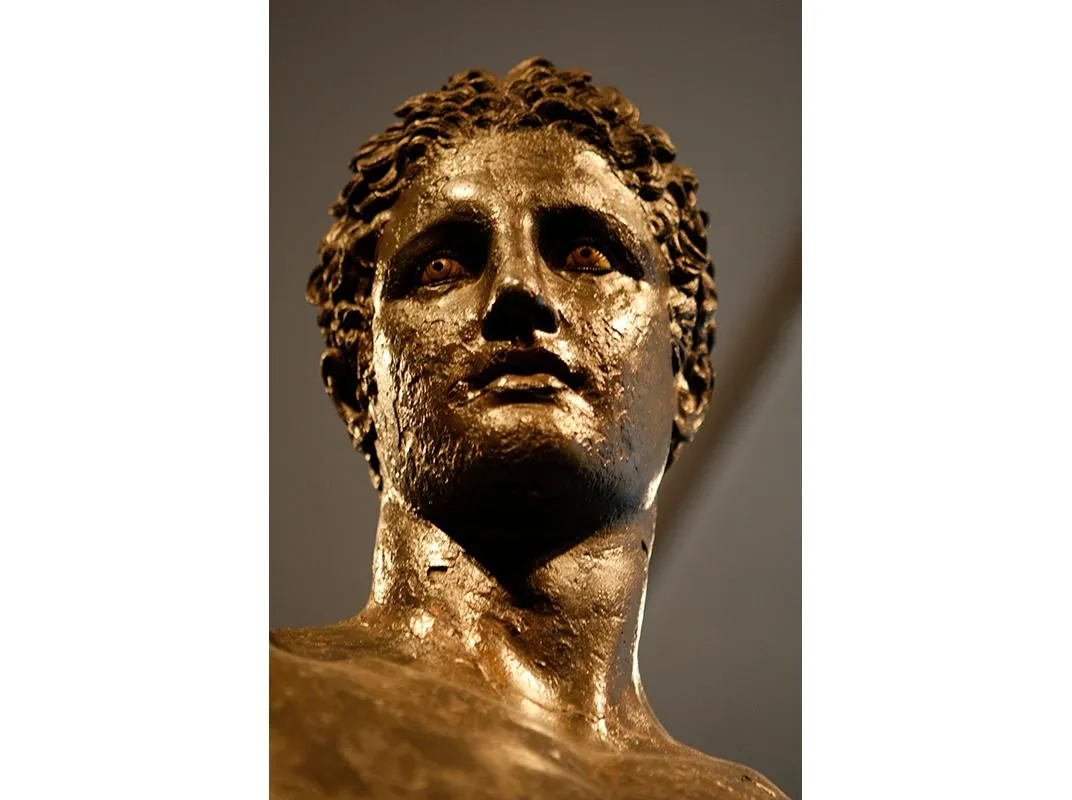
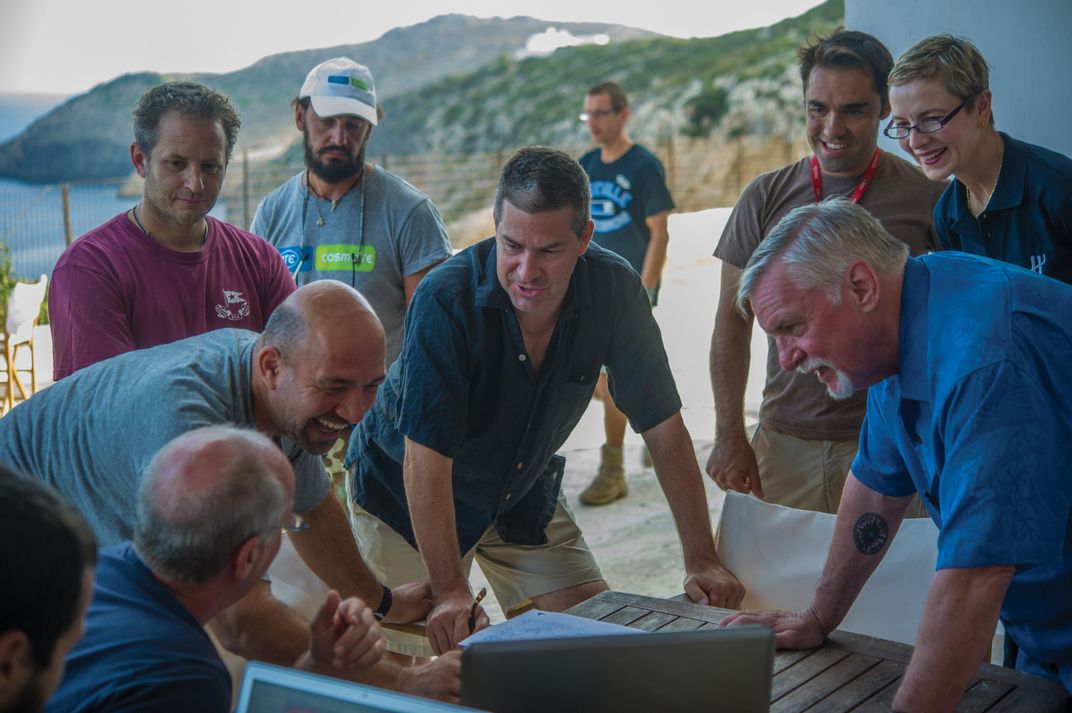
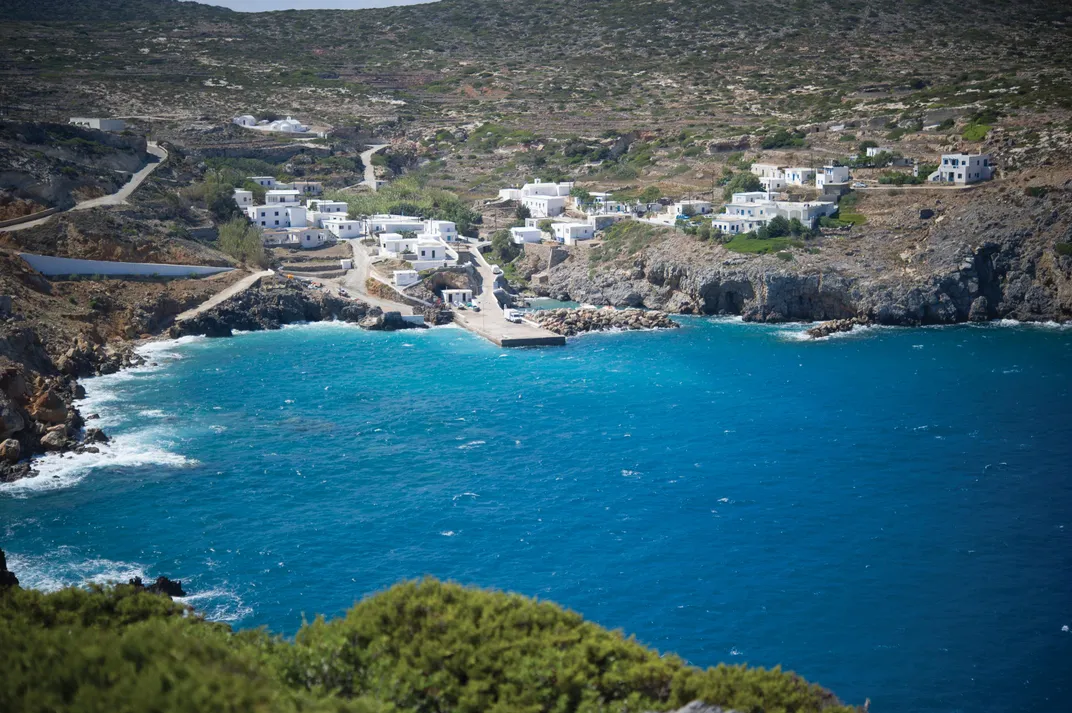
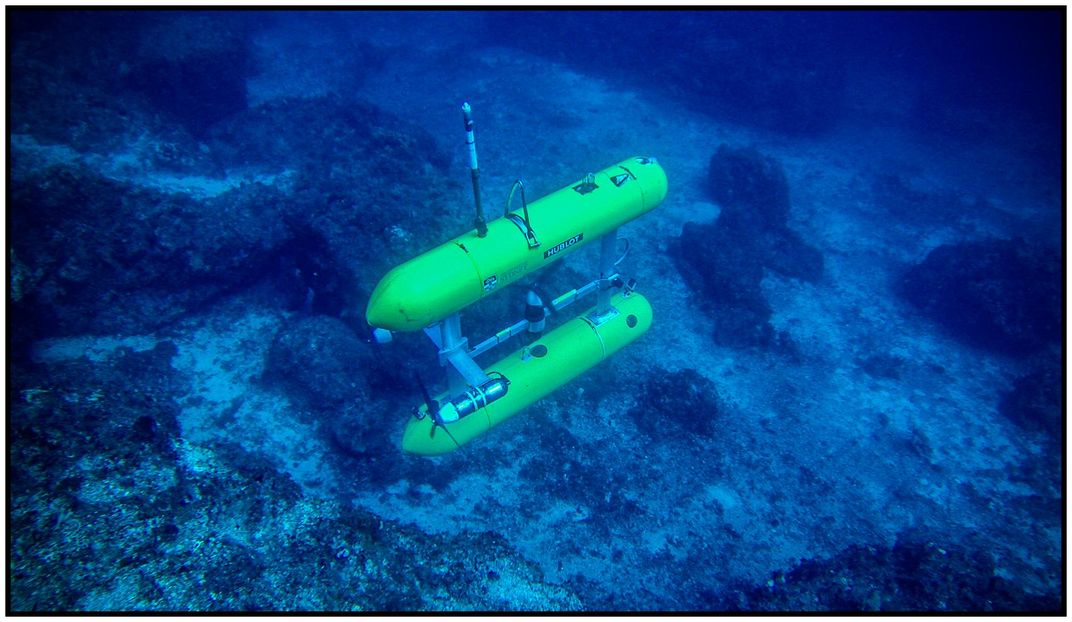
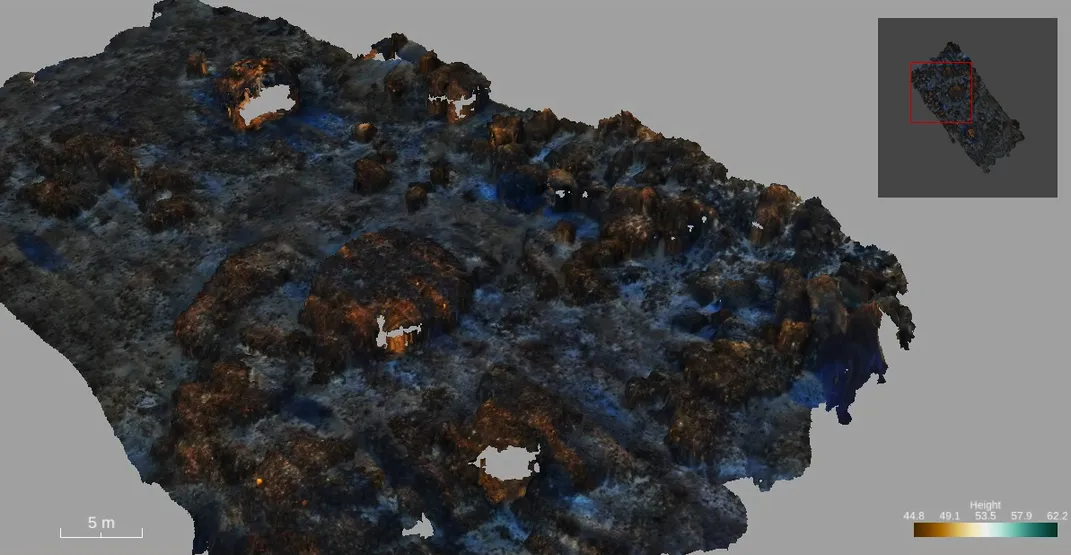



/https://tf-cmsv2-smithsonianmag-media.s3.amazonaws.com/accounts/headshot/Jo.png)